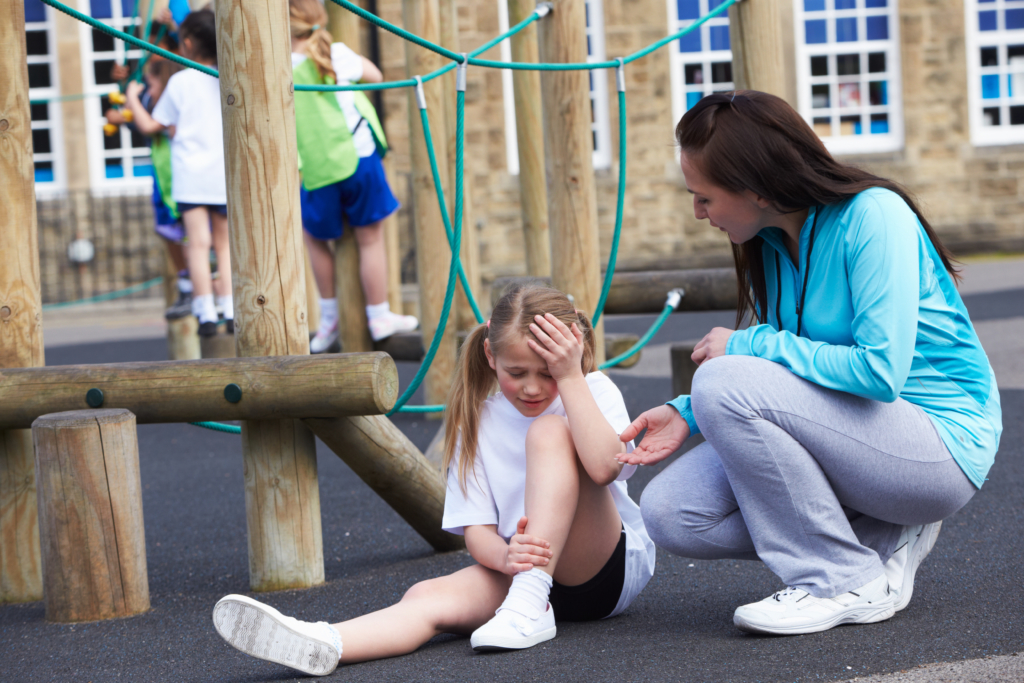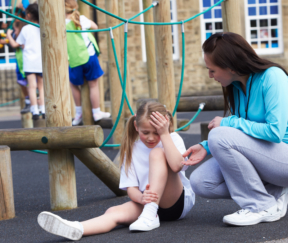
Naturally, parents are under the assumption that when their child is at school, or engaged in an activity on school property, they are properly being supervised – especially if it is a risky activity.
This supposition was recently put to the test in the Jimenez v. Roseville City School District case in California. The plaintiff was a 14-year-old middle school student who was injured while attempting to perform a break dancing move. This style of street dancing is popular among the younger generations and is associated with hip-hop and rap music. What’s important to recognize is that this form of dancing is physically demanding and encourages performers to occasionally complete dangerous moves, such as spinning on their heads and twisting, as well as forward flips and backflips.
Court records indicate that the plaintiff’s guardian filed a lawsuit alleging negligent supervision. The 14-year-old was practicing with a group of peers in an empty classroom, with a teacher’s permission, however at the time there were not adults in the room. The injured child was barely learning how to breakdance and had never done a flip before, but was encouraged by the other dancers to try it. He attempted the flip, but was unable to maintain his balance, and hit his head on the classroom floor.
He has no recollection of the events after having suffered the traumatic brain injury.
As a result of various laws set in place to help public schools avoid liability in such events, it can be difficult for plaintiffs to prove the school responsible. That’s why you’ll want expert Personal Injury Lawyers like Garcia Law Group, PLLC to help you determine whether there is a valid claim against the school or another party.
In fact, in the state of Texas, public schools and their employees are protected under certain laws from most injuries that a child may endure while under their care. This immunity from injury-based lawsuits is set in place for a number of reasons. To begin with, it is impractical for a relatively small staff of adults to be able to observe (and protect) hundreds – if not thousands – of students on their respective campuses. Furthermore, it allows for some flexibility in the classroom for the teachers to be able to teach effectively. Without this protection, athletic programs would cease to exist and classes such as chemistry or biology would not function appropriately. Lastly, there is the issue of student behavior – meaning it is nearly impossible for schools to fully eradicate irrational student behavior and fighting. Laws are designed to take into consideration the efforts of teachers and administrators having to deal with the difficulties of working with such large amounts of students all at once.
However, there is not absolute immunity from injury lawsuits. School districts, and their individual schools, are typically not protected from the actions (and negligence) of visitors, contractors, volunteers, or other non-employees. Additionally, there are several exemptions in which schools and their employees can be held liable.
- Excessive force when disciplining a student that results in bodily harm.
- The negligence of an employee that results in bodily harm to a student, but which generally involves operations of a public school vehicle.
- If a district employees causes injury due to negligence or intentional acts that were outside of their professional duties.
In the first scenario, excessive force in discipline is subject to differing opinions, and so the question of “what is excessive” is typically answered by a jury. The second exemption is primarily aimed at employees in the transportation department who did not act accordingly to prevent student injury – perhaps because of outright negligence (such as drinking while driving) or distraction (such as utilizing a cell phone). The third exemption includes issues such as improper behavior, sexual harassment, sexual abuse, or even offering medical advice without proper licensing or experience (i.e. a coach providing medical advice to an injured student that results in further damages).
Typically, when an employee acts on their own free will, the employer is not liable. However, there could be some fault placed on the part of school officials if they failed to properly investigate and stop the intentional acts of an employee.
In the case of Jimenez v. Roseville City School District, which has gone through an appeals process, the plaintiff’s lawyers have argued that because one school district employee (the principal) was aware of the students flipping in their dance routine, which was against school rules, the lack of supervision proximately caused the injuries. The case is now remanded for trial.
Please take into consideration that schools are frequently able to defeat personal injury lawsuits because they are soundly protected by immunity laws in the state of Texas. However, that does not mean that it is impossible to win a trial or settle a truly valid claim.
Yes, the process may be a bit more difficult, but that’s why you’ll want an experienced and competent team who isn’t afraid of big challenges. The Garcia Law Group, PLLC is just the firm committed to helping you, and your child, receive the justice and recompense the situation warrants.
Even if your child is injured as a direct result of a non-employee of the district, such as another student or visitor, then we’ll make sure that person is held independently liable for the injury. Reach us (956) 661-8000 to discuss your potential personal injury claim with lawyers committed to you and your family.

